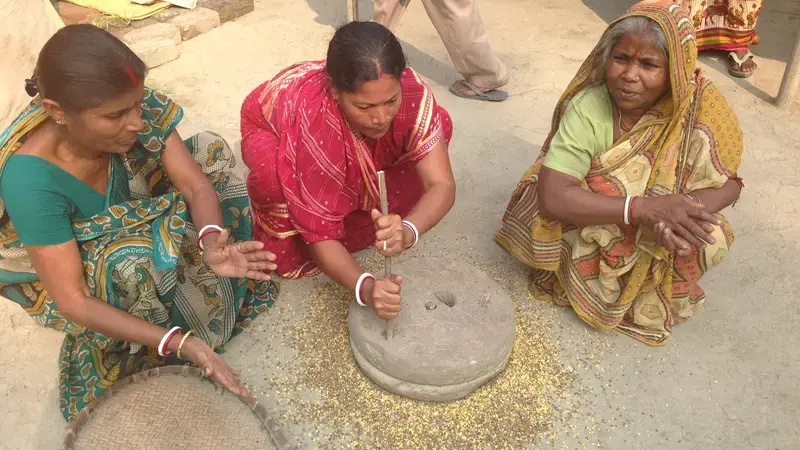Grasspea: back on the menu for India’s agriculture

Grasspea (Lathyrus sativus L.) has been grown as a crop in South Asia since time immemorial. But it has a problem. Its seeds and plant parts contain a neuro-toxin, ODAP. As a result in India its marketing has been banned in some states, but not its cultivation. Because of this trade ban, farmers were discouraged to grow grasspea on a large scale, growing only for family consumption, and its cropping area decreased from 1.3 m ha to about 850,000 ha in recent decades.
However, it’s now coming back into favor due to a number of advantages, such as its very low input requirement, low cost of cultivation, suitability for Conservation Agriculture, adaptation to harsh environments (drought, heat, excess water and infertile soils),and crucially, its dual purpose use.
Grasspea has the potential to grow in rice-fallows, and out of a total of 11.6 m ha fallows, at least 0.5 m can be brought under grasspea to boost income for farmers as a second crop and improve land productivity. Researchers in India and at ICARDA have been involved in developing low-toxin grasspea varieties to avoid health hazards, along with high yield (up to 43% higher) and wide adaptation. In this endeavour a number of low-toxin varieties (Nirmal, Ratan, Prateek, and Mahatewara) have been released in India, and ICARDA-supplied low-ODAP lines are in multi-location testing for future release.
Seed non-availability was the major constraint at the start of the project, but now with massive seed production programs initiated by farmers, a total of 150 t of seeds of improved varieties was made available for distribution in 2012/13. Several seed-hubs have been established, and capacity development and awareness programs have been adopted. This year, the following trainings and workshops have taken place: two trainer trainings, 37 farmer workshops, 15 trainings on quality seed production, three trainings for women on the physical detoxification of local varieties, four awareness camps, and six field days were organized. A total of 109 villages have been covered, involving 1184 farmers in 13 districts across four states. Dissemination of grasspea technologies is being funded by the Indian Government’s National Food Security Mission Program.
The success of the project in the last two years has encouraged another state, Maharashtra, to introduce grasspea cultivation in the Vidharva region, a semi-arid and single cropped area. Instructed by India’s Ministry of Agriculture, the Agricultural Commissioner of the State has sought ICARDA’s help and called upon regional coordinator and legume breeder, Dr. Ashutosh Sarker, to provide them with improved seeds of these varieties along with appropriate production technologies.
